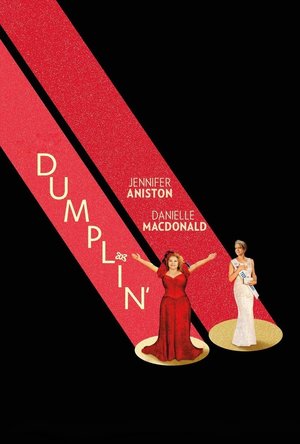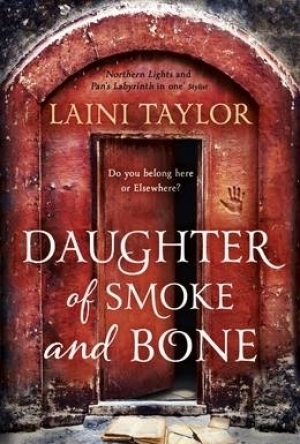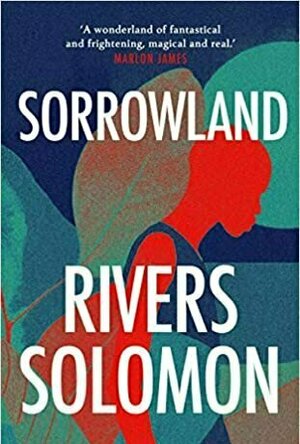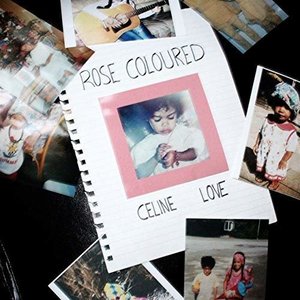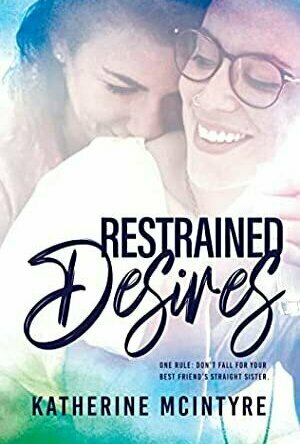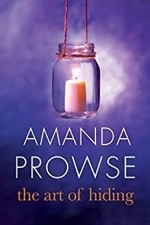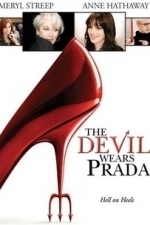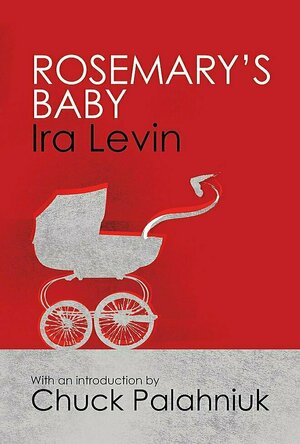Search
Phillip McSween (751 KP) rated Dumplin' (2018) in Movies
Jan 16, 2019
Good On So Many Levels
High school student Willowdean (Danielle MacDonald) decides to enter a beauty pageant to spite her mom Rosie (Jennifer Aniston), a former pageant queen.
Acting: 10
Beginning: 10
Characters: 10
The characters in this story are not just unique and enjoyable. They also represent the melting pot of what this world should be. Willowdean feels out of place because she is heavyset so she tries to attack herself before others do. Her Aunt Lucy (Hilliary Begley) tried to teach her to do the opposite before she passed away, but Willowdean didn’t grasp her aunt’s confidence unfortunately. Through her journey of pageant life, she makes two good friends: Hannah (Bex Taylor-Klaus) who is anti-establishment (or anti-everything, rather) and Millie (Maddie Baillio) a ball of happiness with an overprotective mom. They are at the core of a slew of good characters that brighten the story. And did I mention the drag queens? Phe-no-men-al.
Cinematography/Visuals: 10
Conflict: 10
The conflict here is less about outward confrontation and more about inner discovery. Willowdean’s greatest enemy is herself, something most of us can probably relate to. It is refreshing to watching her battle old demons while coming to terms with who she is and who she can be. Destroying yourself is toxic and Dumplin’ shows how a negative view of one’s self can damage and destroy the relationships around us.
Genre: 10
Memorability: 8
The story as a whole has a magical feeling to it that’s centered in realism, almost like a trailer park Cinderella. I thought of all the 201 movies I watched in 2018. Few touched me quite like this one. A really memorable movie can make you laugh, maybe cry a little, and reflect. Dumplin’ gets the job done. It teaches you never to underestimate yourself and to go all out even when you don’t think you have a shot.
Pace: 10
I love when storytelling is consistent and blends seamlessly from one scene to the next. You get that here. There’s not a whole lot of pointless dialogue that takes you nowhere or random scenes that forces relationship-building. It moves consistently like a batch of waves. Before you know it, it’s over and you’ve had a great ride.
Plot: 10
The story isn’t just original but heartfelt. Something we can all get behind. I can honestly say that I’ve never seen anything like it. You can see the ending coming a mile away, but you’re having so much of a good time you don’t care!
Resolution: 10
Just as with the plot, you definitely see the ending coming a mile away. Doesn’t make it any less awesome or touching. Mum’s the word, but it ties on a nice little bow on the movie as a whole.
Overall: 98
I’m always wary of Netflix originals. Not because they can’t be good, I’ve seen plenty of amazing things on Netflix. Rather I understand that there’s a pressure for them to keep putting out original content at a fast pace because the market is catching up. This could mean more swings-and-misses. Dumplin’ is not a casualty of that in the least. Quality movie.
Acting: 10
Beginning: 10
Characters: 10
The characters in this story are not just unique and enjoyable. They also represent the melting pot of what this world should be. Willowdean feels out of place because she is heavyset so she tries to attack herself before others do. Her Aunt Lucy (Hilliary Begley) tried to teach her to do the opposite before she passed away, but Willowdean didn’t grasp her aunt’s confidence unfortunately. Through her journey of pageant life, she makes two good friends: Hannah (Bex Taylor-Klaus) who is anti-establishment (or anti-everything, rather) and Millie (Maddie Baillio) a ball of happiness with an overprotective mom. They are at the core of a slew of good characters that brighten the story. And did I mention the drag queens? Phe-no-men-al.
Cinematography/Visuals: 10
Conflict: 10
The conflict here is less about outward confrontation and more about inner discovery. Willowdean’s greatest enemy is herself, something most of us can probably relate to. It is refreshing to watching her battle old demons while coming to terms with who she is and who she can be. Destroying yourself is toxic and Dumplin’ shows how a negative view of one’s self can damage and destroy the relationships around us.
Genre: 10
Memorability: 8
The story as a whole has a magical feeling to it that’s centered in realism, almost like a trailer park Cinderella. I thought of all the 201 movies I watched in 2018. Few touched me quite like this one. A really memorable movie can make you laugh, maybe cry a little, and reflect. Dumplin’ gets the job done. It teaches you never to underestimate yourself and to go all out even when you don’t think you have a shot.
Pace: 10
I love when storytelling is consistent and blends seamlessly from one scene to the next. You get that here. There’s not a whole lot of pointless dialogue that takes you nowhere or random scenes that forces relationship-building. It moves consistently like a batch of waves. Before you know it, it’s over and you’ve had a great ride.
Plot: 10
The story isn’t just original but heartfelt. Something we can all get behind. I can honestly say that I’ve never seen anything like it. You can see the ending coming a mile away, but you’re having so much of a good time you don’t care!
Resolution: 10
Just as with the plot, you definitely see the ending coming a mile away. Doesn’t make it any less awesome or touching. Mum’s the word, but it ties on a nice little bow on the movie as a whole.
Overall: 98
I’m always wary of Netflix originals. Not because they can’t be good, I’ve seen plenty of amazing things on Netflix. Rather I understand that there’s a pressure for them to keep putting out original content at a fast pace because the market is catching up. This could mean more swings-and-misses. Dumplin’ is not a casualty of that in the least. Quality movie.
Sophia (Bookwyrming Thoughts) (530 KP) rated Daughter of Smoke and Bone in Books
Jan 23, 2020
How I really feel these days: read/listen to a book, pull out the overall point of the book, give brief information on why I liked/disliked the book, the end. Or, go through that and the words come as I start typing the review, and it may or may not be in an organized manner. That's for your judgment, I suppose.
It's precisely how I feel with <i>Daughter of Smoke and Bone</i>. It's interesting with all the seraphs and chimaera (I keep wanting to call that chimera) being at war with each other, but I pretty much picked out one very important theme in this entire book.
Reincarnation (or resurrection in this case) and self-discovery.
Karou is a very mysterious person (at least, she likes to keep it that way). From early on, she doesn't have a family (aside from a surrogate one), doesn't talk about herself, and avoids questions from anyone who actually want to know who she is aside from the fact she is fantastic at drawing mystical creatures. She also deals with wishes, her hair is blue (really cool, by the way), and speaks over twenty languages. But she still doesn't understand who she really is, and that remains the constant until Karou goes on an errand where she comes across Akiva, a seraph with fire in his eyes.
I'm not really sure how I feel about Akiva. Although Laini gives information about his past, especially with Madrigal's memories, I'm pretty indifferent towards him. He's a seraph, fell in love with Madrigal, and wants peace among the seraph and chimaera, but otherwise, I feel like he's just appropriately placed in the story.
<i>Daughter of Smoke and Bone</i> is also one of those books in which I believe Laini does a fantastic job with flashbacks. I'm generally not a huge fan of flashbacks, because while I know they play an important role most of the time (authors don't do things in their novel without reason), they sometimes add more bulk or it doesn't really fit well in the story.
In <i>Daughter of Smoke and Bone's</i> case, it would have been a really bad idea not to have so many flashbacks later on in the story. From what I've read up to Madrigal's memories, Karou is a enigmatic person. Madrigal's memories add on to Karou as a whole, and I feel it makes Karou more developed than she would have been had Laini not written in the most important aspects of Madrigal's life.
<i>Daughter of Smoke and Bone</i> has it's very gruesome parts (don't tell me listening to a description of someone being beheaded is <em>not</em> gruesome), but I enjoyed it and I'm looking forward to listening to the second book (bonus points because it's the same narrator for the entire trilogy).
Have I mentioned I absolutely <em>adore</em> Zuzanna? *kiss/punch*
<a href="https://bookwyrmingthoughts.com/audiobook-review-daughter-of-smoke-and-bone-by-laini-taylor/"; target="_blank">This review was originally posted on Bookwyrming Thoughts</a>
It's precisely how I feel with <i>Daughter of Smoke and Bone</i>. It's interesting with all the seraphs and chimaera (I keep wanting to call that chimera) being at war with each other, but I pretty much picked out one very important theme in this entire book.
Reincarnation (or resurrection in this case) and self-discovery.
Karou is a very mysterious person (at least, she likes to keep it that way). From early on, she doesn't have a family (aside from a surrogate one), doesn't talk about herself, and avoids questions from anyone who actually want to know who she is aside from the fact she is fantastic at drawing mystical creatures. She also deals with wishes, her hair is blue (really cool, by the way), and speaks over twenty languages. But she still doesn't understand who she really is, and that remains the constant until Karou goes on an errand where she comes across Akiva, a seraph with fire in his eyes.
I'm not really sure how I feel about Akiva. Although Laini gives information about his past, especially with Madrigal's memories, I'm pretty indifferent towards him. He's a seraph, fell in love with Madrigal, and wants peace among the seraph and chimaera, but otherwise, I feel like he's just appropriately placed in the story.
<i>Daughter of Smoke and Bone</i> is also one of those books in which I believe Laini does a fantastic job with flashbacks. I'm generally not a huge fan of flashbacks, because while I know they play an important role most of the time (authors don't do things in their novel without reason), they sometimes add more bulk or it doesn't really fit well in the story.
In <i>Daughter of Smoke and Bone's</i> case, it would have been a really bad idea not to have so many flashbacks later on in the story. From what I've read up to Madrigal's memories, Karou is a enigmatic person. Madrigal's memories add on to Karou as a whole, and I feel it makes Karou more developed than she would have been had Laini not written in the most important aspects of Madrigal's life.
<i>Daughter of Smoke and Bone</i> has it's very gruesome parts (don't tell me listening to a description of someone being beheaded is <em>not</em> gruesome), but I enjoyed it and I'm looking forward to listening to the second book (bonus points because it's the same narrator for the entire trilogy).
Have I mentioned I absolutely <em>adore</em> Zuzanna? *kiss/punch*
<a href="https://bookwyrmingthoughts.com/audiobook-review-daughter-of-smoke-and-bone-by-laini-taylor/"; target="_blank">This review was originally posted on Bookwyrming Thoughts</a>
Melanie Caldicott (6 KP) rated Sorrowland in Books
Apr 29, 2021
You can also read my review at my blog - https://roamingthroughbooks.wordpress.com
Sorrowland is a genre-bending book which is like nothing I have ever read before and probably ever will again!
The story centres around Fern, an albino black teenage girl who gives birth to twins, Howling and Feral in the woods after escaping from a cult called Cainland. What follows is a mindboggling adventure surrounding her survival.
This is a coming of age story like no other – part sci-fi, part horror, part dystopian, part magical realism, this book defies genre. But amongst all the myriad of twists and turns this novel takes, what lies at the heart of it is a story about a girl who comes to understand her identity and rises above what has been spoken over her in her past.
During Fern’s journey of self-discovery the book examines themes such as racism, indoctrination, abuse and misogyny. There are many challenges in reading this book as we encounter a dystopian world that is disturbingly similar to our own exploring those who live on the fringe of society due to white domination. This not only includes Cainland, the cult set up by black people originally to challenge the white belief system, but also native American characters who quietly hold onto their truth in a far less bigoted and twisted way.
I love the big questions this book asks and the twisted paths it takes in asking them leading you into such unknown territories through the plot that you meet these issues head on in such different ways that you confront them anew and reexamine how you really feel about them and the impact that they have on our world.
Sorrowland is compelling and, although this would never be a genre I would normally read, I enjoyed the enigmatic nature of the evolving fantastical storyline and the constant surprises Rivers Solomon weaves into the plot. It is extremely well-written, with powerful characterisation, rich with poetic descriptions and intelligent themes.
However, the aims of the book seem to get a little muddled at times and I became confused about what Solomon wanted me to get out of the book. The story becomes so fast-paced and dense at times that this prevented me from taking a step back and truly immersing myself in the deeper themes of the novel.
This is a hard book to review. As I said, not something I would normally read, but the quality of the writing won me over. That said, I did not come away from the book feeling a sense of enjoyment, but instead, unsettled and disturbed by encountering a story of brutality with wild, savage characters and a frightening world where nothing is as it seems.
I would recommend this book – purely because you will be changed by it and this is one of the most powerful gifts of literature – but it is not a comfortable read and would not suit everyone.
Thanks to the publishers and NetGalley for the ARe-copy in exchange for this honest review.
Sorrowland is a genre-bending book which is like nothing I have ever read before and probably ever will again!
The story centres around Fern, an albino black teenage girl who gives birth to twins, Howling and Feral in the woods after escaping from a cult called Cainland. What follows is a mindboggling adventure surrounding her survival.
This is a coming of age story like no other – part sci-fi, part horror, part dystopian, part magical realism, this book defies genre. But amongst all the myriad of twists and turns this novel takes, what lies at the heart of it is a story about a girl who comes to understand her identity and rises above what has been spoken over her in her past.
During Fern’s journey of self-discovery the book examines themes such as racism, indoctrination, abuse and misogyny. There are many challenges in reading this book as we encounter a dystopian world that is disturbingly similar to our own exploring those who live on the fringe of society due to white domination. This not only includes Cainland, the cult set up by black people originally to challenge the white belief system, but also native American characters who quietly hold onto their truth in a far less bigoted and twisted way.
I love the big questions this book asks and the twisted paths it takes in asking them leading you into such unknown territories through the plot that you meet these issues head on in such different ways that you confront them anew and reexamine how you really feel about them and the impact that they have on our world.
Sorrowland is compelling and, although this would never be a genre I would normally read, I enjoyed the enigmatic nature of the evolving fantastical storyline and the constant surprises Rivers Solomon weaves into the plot. It is extremely well-written, with powerful characterisation, rich with poetic descriptions and intelligent themes.
However, the aims of the book seem to get a little muddled at times and I became confused about what Solomon wanted me to get out of the book. The story becomes so fast-paced and dense at times that this prevented me from taking a step back and truly immersing myself in the deeper themes of the novel.
This is a hard book to review. As I said, not something I would normally read, but the quality of the writing won me over. That said, I did not come away from the book feeling a sense of enjoyment, but instead, unsettled and disturbed by encountering a story of brutality with wild, savage characters and a frightening world where nothing is as it seems.
I would recommend this book – purely because you will be changed by it and this is one of the most powerful gifts of literature – but it is not a comfortable read and would not suit everyone.
Thanks to the publishers and NetGalley for the ARe-copy in exchange for this honest review.
Bong Mines Entertainment (15 KP) rated Rose Coloured - Single by Celine Love in Music
Jul 10, 2019
Celine Love is a London-based singer-songwriter from Hamburg. Not too long ago, she released a music video for her debut single, entitled, “Rose Coloured”.
“The music video (directed by Sylvia Hong) explores how that darkness we are shielded from as children were always there. A lot of us may think back to our childhood as perfect when truly we have blocked out the negative we might have seen or experienced. If we do not confront these issues from the past, it can drive you insane.” – Celine Love
‘Rose Coloured’ tells an interesting tale of a happy young girl who wants to use love to erase darkness.
Apparently, her caramel skin differs from her friends’ vanilla skin tone. But she doesn’t see the difference between her and them.
Even though they trust each other, she still has to look at life through a rose-colored filter.
‘Rose Coloured’ contains a relatable storyline, pleasing vocals, and lush instrumentation flavored with contemporary R&B and neo-soul elements.
“The idea behind ‘Rose Coloured’ was to capture memories, moments and situations that describe the blissful ignorance of my childhood. The desire to put a rose-colored filter on everything that is bad in the world. Before racism, insecurities, heartbreak, or stress became part of life. The world is not only on your side but shields you from the negativity.” – Celine Love
“The imagery in ‘Rose Coloured’ is taken directly from my childhood. The song describes both joy and pain in wanting to relive these moments. Not having to confront the real world with all its social pressures and evils. Growing up in Germany there was a time when I saw my skin color as nothing but ‘caramel’, everyone else was simply ‘vanilla’. The chorus goes ‘I wanna live in a fool’s paradise, show me what love is and we can erase all the darkness.’ The music video reflects this inner conflict.” – Celine Love
A few milestones in Celine Love’s young career include a full scholarship to the music school BIMM Berlin & London.
Not too long ago, she performed at the 2000 Trees in Cheltenham, Kings Jam in Gloucester, Deichbrand and Reeperbahn Festival in Germany, and supported the electro-pop band Years & Years in Hamburg for NRJ Radio.
She composes music with expressionism and self-discovery at its core with a hint of socio-critical commentary.
“The imagery within the song is directly taken from my memories. Writing and recording it left me feeling very nostalgic. So I dug out old photos and songs and reached out to my childhood best friend. It reminded me of a pivotal time as a child, before I became aware of the differences in skin color and hair structure. Not only did I look different from most of the German kids surrounding my life but I would be treated differently too. It wasn’t always negative, but always in a way that made me feel excluded. There was a time before I became aware that my skin color was nothing but ‘caramel’ and everyone else was simply ‘vanilla’. Nothing more. ‘Rose Coloured’ is an almost desperate wish to have that mindset back. The wish to live in a ‘fool’s paradise’. – Celine Love
“The music video (directed by Sylvia Hong) explores how that darkness we are shielded from as children were always there. A lot of us may think back to our childhood as perfect when truly we have blocked out the negative we might have seen or experienced. If we do not confront these issues from the past, it can drive you insane.” – Celine Love
‘Rose Coloured’ tells an interesting tale of a happy young girl who wants to use love to erase darkness.
Apparently, her caramel skin differs from her friends’ vanilla skin tone. But she doesn’t see the difference between her and them.
Even though they trust each other, she still has to look at life through a rose-colored filter.
‘Rose Coloured’ contains a relatable storyline, pleasing vocals, and lush instrumentation flavored with contemporary R&B and neo-soul elements.
“The idea behind ‘Rose Coloured’ was to capture memories, moments and situations that describe the blissful ignorance of my childhood. The desire to put a rose-colored filter on everything that is bad in the world. Before racism, insecurities, heartbreak, or stress became part of life. The world is not only on your side but shields you from the negativity.” – Celine Love
“The imagery in ‘Rose Coloured’ is taken directly from my childhood. The song describes both joy and pain in wanting to relive these moments. Not having to confront the real world with all its social pressures and evils. Growing up in Germany there was a time when I saw my skin color as nothing but ‘caramel’, everyone else was simply ‘vanilla’. The chorus goes ‘I wanna live in a fool’s paradise, show me what love is and we can erase all the darkness.’ The music video reflects this inner conflict.” – Celine Love
A few milestones in Celine Love’s young career include a full scholarship to the music school BIMM Berlin & London.
Not too long ago, she performed at the 2000 Trees in Cheltenham, Kings Jam in Gloucester, Deichbrand and Reeperbahn Festival in Germany, and supported the electro-pop band Years & Years in Hamburg for NRJ Radio.
She composes music with expressionism and self-discovery at its core with a hint of socio-critical commentary.
“The imagery within the song is directly taken from my memories. Writing and recording it left me feeling very nostalgic. So I dug out old photos and songs and reached out to my childhood best friend. It reminded me of a pivotal time as a child, before I became aware of the differences in skin color and hair structure. Not only did I look different from most of the German kids surrounding my life but I would be treated differently too. It wasn’t always negative, but always in a way that made me feel excluded. There was a time before I became aware that my skin color was nothing but ‘caramel’ and everyone else was simply ‘vanilla’. Nothing more. ‘Rose Coloured’ is an almost desperate wish to have that mindset back. The wish to live in a ‘fool’s paradise’. – Celine Love
Debbiereadsbook (1617 KP) rated Restrained Desires (Rehoboth Pact #3) in Books
Apr 9, 2022
Saved the best for last!
Independent reviewer for Archaeolibrarian, I was gifted my copy of this book.
This is the final book in the Rehoboth Pact trilogy. It CAN be read as a stand alone, however I STRONGLY recommend you read the other two books first. It will give you a better picture of Kyle and how, up to now, she has been kind of in the background. Confined got 4 stars, Opposed crept up to 4.5 stars.
But this one? Knocked it out the park, baby, and it gets the full and shiny 5 star rating! Saving the best for last was the right thing to do!
Chelsea is Aubrey's sister (from Opposed) and is newly divorced from her husband. Kyle is, well, at best, plodding along. Her mother (and I use the term very loosely!) pushes Kyle to say she is bringing a date to the family gathering and then panics because she doesn't have one. Chelsea, being all single, steps up to the plate to help Kyle. And there follows a journey of self discovery, and learning to love yourself, and that found families can be so much more than blood families.
Kyle. . .oh! i wanted to wrap her up and give her a big cuddle cos that parental female unit was not a nice person! Wanted to punch the b*tch a time or two! But Chelsea? She really SEES Kyle, and Kyle does struggle a bit with that, at first. Once she and Chelsea take their fake relationship up a notch, Kyle really benefits for having someone in her corner. And Chelsea? She's different to Aubs, but not less a force to be reckoned with. Once she gets her hands on Kyle, there was no going back.
Til someone does something stoopid and then there is a fight to be had.
Aubs nearly got a punch, here, along with that parental unit. She didn't take too well to Chelsea and Kyle getting together and deals with it badly. She DOES redeem herself, giving Chelsea the means to win the fight for Kyle, but still.
It is again, HEAVY on the emotional aspect, but for Kyle dealing with that parental unit b*tch and feelings of inadequacy, and Chelsea, dealing with her divorce, but her father's betrayal cuts deep. He does come out the other side, but faced with losing both his daughters will make anyone turnaround rapidly!
The smexy stuff? Oh! My! Days! steamiest of the three. Mostly because Kyle pushes every single button of Chelsea's and then some. And Chelsea pushes buttons in Kyle she never knew she needed pushing!
Obviously, Aubs and Selina play a part here, but also Mia and Sky, and it was lovely to catch up with them all.
I again commend Ms McIntyre on her writing skills. Switching from MF, to MM and then to FF can't be easy, but McIntyre NAILS it with the final book in this trilogy. Keep 'em coming, please!
As I said . .
5 full and shiny stars!
*same worded review will appear elsewhere
This is the final book in the Rehoboth Pact trilogy. It CAN be read as a stand alone, however I STRONGLY recommend you read the other two books first. It will give you a better picture of Kyle and how, up to now, she has been kind of in the background. Confined got 4 stars, Opposed crept up to 4.5 stars.
But this one? Knocked it out the park, baby, and it gets the full and shiny 5 star rating! Saving the best for last was the right thing to do!
Chelsea is Aubrey's sister (from Opposed) and is newly divorced from her husband. Kyle is, well, at best, plodding along. Her mother (and I use the term very loosely!) pushes Kyle to say she is bringing a date to the family gathering and then panics because she doesn't have one. Chelsea, being all single, steps up to the plate to help Kyle. And there follows a journey of self discovery, and learning to love yourself, and that found families can be so much more than blood families.
Kyle. . .oh! i wanted to wrap her up and give her a big cuddle cos that parental female unit was not a nice person! Wanted to punch the b*tch a time or two! But Chelsea? She really SEES Kyle, and Kyle does struggle a bit with that, at first. Once she and Chelsea take their fake relationship up a notch, Kyle really benefits for having someone in her corner. And Chelsea? She's different to Aubs, but not less a force to be reckoned with. Once she gets her hands on Kyle, there was no going back.
Til someone does something stoopid and then there is a fight to be had.
Aubs nearly got a punch, here, along with that parental unit. She didn't take too well to Chelsea and Kyle getting together and deals with it badly. She DOES redeem herself, giving Chelsea the means to win the fight for Kyle, but still.
It is again, HEAVY on the emotional aspect, but for Kyle dealing with that parental unit b*tch and feelings of inadequacy, and Chelsea, dealing with her divorce, but her father's betrayal cuts deep. He does come out the other side, but faced with losing both his daughters will make anyone turnaround rapidly!
The smexy stuff? Oh! My! Days! steamiest of the three. Mostly because Kyle pushes every single button of Chelsea's and then some. And Chelsea pushes buttons in Kyle she never knew she needed pushing!
Obviously, Aubs and Selina play a part here, but also Mia and Sky, and it was lovely to catch up with them all.
I again commend Ms McIntyre on her writing skills. Switching from MF, to MM and then to FF can't be easy, but McIntyre NAILS it with the final book in this trilogy. Keep 'em coming, please!
As I said . .
5 full and shiny stars!
*same worded review will appear elsewhere
Sassy Brit (97 KP) rated The Art of Hiding in Books
Jun 5, 2019
The Art of Hiding by Amanda Prowse is a solid story highlighting one family’s struggle to cope with a life changing event that not only turned their lives upside down in a blink of an eye, but forced them re-evaluate what was important to them. No easy feat, I can tell you!
Nina has it all, great house, loving husband, and two well-looked after kids who could literally have anything they wanted should they ask. But after tragedy strikes, and her husband Finn is killed in car accident, suddenly Nina is left with a mountain of debt and two ‘posh’ kids who do not know how to cope in the real world when everything they know is drastically all taken away from them.
I loved the fact that her husband was maybe not the good guy in all this either, I mean, how could he amount so much debt and not tell his own wife? What was he thinking? Yes, that’s right, he wasn’t! This also means that because of his past actions she now has to stick up for her husband when talking about him to her kids for their sake. He was their dad, after all. Difficult, though. Especially when deep down she’s angry about the secrets he’s been keeping from her when he was alive, and the impact it’s going to have on them all now he’s gone and left them with a mess to cope with.
What’s worse is there is absolutely nothing she can do to change that now. Life has to go on, and deal with this situation they must. If only he had talked to her they wouldn’t have been in this mess, but in all honesty, no one could foresee the accident. Isn’t that always the way? Makes you think, doesn’t it? Life can be taken away from you just like that *snaps fingers*.
I enjoyed seeing Nina’s character grow from strength to strength. Not only was she forced to turn her own life around and face the harsh reality of what her husband had done, she also had to help her kids through their struggles of losing their dad, their home, their school, friends, and everything they ever thought was their life, as they knew it. I can’t imagine living such an affluent life only to have it all taken away like that, but I can imagine it to be a realistic issue that could happen to someone very easily. This is exactly why I enjoyed this book immensely. The emotional depth and self discovery that Nina and her kids went through was a treat to read! (Oh, that sounds rather sadistic of me!) In fact, It was so good I even shed a tear. You know, the sad but happy, mixed feelings kind?
In a way this is not the physiological thriller I expected, but more of a family drama.
If you haven’t got your hands on this compelling book yet, don’t delay any longer! If it SOUNDS like something you’d like, it will most likely BE something you’d LOVE! Amanda Prowse knows how to tell a realistic story that tugs on your heartstrings, and really makes you think. A well written story of love, lies and one’s determination to do whatever it takes to protect her family during a time of crisis and disarray.
Thank you to the author, and Netgalley for my copy in exchange for my unbiased opinion. Actually, I also won this paperback version in a Goodreads contest.
Nina has it all, great house, loving husband, and two well-looked after kids who could literally have anything they wanted should they ask. But after tragedy strikes, and her husband Finn is killed in car accident, suddenly Nina is left with a mountain of debt and two ‘posh’ kids who do not know how to cope in the real world when everything they know is drastically all taken away from them.
I loved the fact that her husband was maybe not the good guy in all this either, I mean, how could he amount so much debt and not tell his own wife? What was he thinking? Yes, that’s right, he wasn’t! This also means that because of his past actions she now has to stick up for her husband when talking about him to her kids for their sake. He was their dad, after all. Difficult, though. Especially when deep down she’s angry about the secrets he’s been keeping from her when he was alive, and the impact it’s going to have on them all now he’s gone and left them with a mess to cope with.
What’s worse is there is absolutely nothing she can do to change that now. Life has to go on, and deal with this situation they must. If only he had talked to her they wouldn’t have been in this mess, but in all honesty, no one could foresee the accident. Isn’t that always the way? Makes you think, doesn’t it? Life can be taken away from you just like that *snaps fingers*.
I enjoyed seeing Nina’s character grow from strength to strength. Not only was she forced to turn her own life around and face the harsh reality of what her husband had done, she also had to help her kids through their struggles of losing their dad, their home, their school, friends, and everything they ever thought was their life, as they knew it. I can’t imagine living such an affluent life only to have it all taken away like that, but I can imagine it to be a realistic issue that could happen to someone very easily. This is exactly why I enjoyed this book immensely. The emotional depth and self discovery that Nina and her kids went through was a treat to read! (Oh, that sounds rather sadistic of me!) In fact, It was so good I even shed a tear. You know, the sad but happy, mixed feelings kind?
In a way this is not the physiological thriller I expected, but more of a family drama.
If you haven’t got your hands on this compelling book yet, don’t delay any longer! If it SOUNDS like something you’d like, it will most likely BE something you’d LOVE! Amanda Prowse knows how to tell a realistic story that tugs on your heartstrings, and really makes you think. A well written story of love, lies and one’s determination to do whatever it takes to protect her family during a time of crisis and disarray.
Thank you to the author, and Netgalley for my copy in exchange for my unbiased opinion. Actually, I also won this paperback version in a Goodreads contest.
Movie Metropolis (309 KP) rated The Devil Wears Prada (2006) in Movies
Jun 11, 2019
I was watching The Devil Wears Prada the other day on ITV2 and forgot just how brilliant a film it is, it really did exceed expectations back then in 2006 and even now in 2011. Here’s the review I wrote all those years ago. Enjoy!
David Frankel, a rather unknown television director makes his debut on the silver screen in this stunning adaptation of Lauren Weisberger’s not so stunning novel, The Devil Wears Prada.
Anne Hathaway and Meryl Streep join a mesmerising cast in this surprisingly brilliant rom-com. The premise is simple and kept that way to ensure all detail is carried across in depth without missing any major points from the novel. Weisberger should be astounded that Frankel managed to turn her rather lacklustre book into a first-rate movie.
Anne Hathaway plays ‘Andy Sax’, an unknown journalist with no eye for fashion who wants to get her foot on the bottom ladder of the media industry. Her character simply leaps off the screen, from her dopey, lovable personality to her cheap, second rate clothing; she is truly a joy to watch. Emily Blunt plays the fashion conscious assistant who would do anything and everything to get as high as possible in the clothing industry; again, her character is played with a love/hate finesse that few actresses of 2006 can match.
However, by far the best performance is given by Meryl Streep as ‘Miranda Priestly’, editor and chief of ‘Runway’ magazine. Sly, career obsessed with a dash of emotionality added in, she is exceptional in her role and should be seriously considered for an Oscar at this years awards. Her dialogue is spoken with a heartless brilliance that no other actress could even hold a candle to, she is perfectly cast in this role.
Stanley Tucci plays a somewhat flat member of the team, possibly due to his little screen time, but he is by no means dull, with personality abound.
The soundtrack is genius, and perfectly matched to the film, from the outset right up until the closing credits, each song is flawlessly integrated into the feature. Camera-work is also on par with the best of this year and really helps the characters stand out in their roles.
Where most rom-coms use cheap gags to gain laughs from the audience, Prada expects you to think a little more about what you’re laughing at, a deep message about ones self discovery is incorporated, but well hidden in the film. Of course there are a few laughs of the cheap kind, but unusually, they are actually funny. Comedy really doesn’t get much better than right here.
Some scenes in the film have been directed so well, that the more emotional among us may be reaching for the tissues. The transition from comedy to seriousness is exceptionally watertight, you’ll be laughing one minute and on the edge of your seat the next.
The ending of the film is perhaps of a slight anti-climax, but it portrays a wonderfully deep message about inner emotion, leaving a huge smile on your face as the credits role.
To put it simply, The Devil Wears Prada is a practically faultless movie which should appeal to a huge and diverse range of people. The acting, direction and soundtrack are all absolutely perfect and I think we may have a found a future classic character in ‘Miranda Priestly.’ It’s a joy to watch. Be a devil and go see it.
https://moviemetropolis.net/2011/01/19/a-blast-from-the-past-the-devil-wears-prada-2006/
David Frankel, a rather unknown television director makes his debut on the silver screen in this stunning adaptation of Lauren Weisberger’s not so stunning novel, The Devil Wears Prada.
Anne Hathaway and Meryl Streep join a mesmerising cast in this surprisingly brilliant rom-com. The premise is simple and kept that way to ensure all detail is carried across in depth without missing any major points from the novel. Weisberger should be astounded that Frankel managed to turn her rather lacklustre book into a first-rate movie.
Anne Hathaway plays ‘Andy Sax’, an unknown journalist with no eye for fashion who wants to get her foot on the bottom ladder of the media industry. Her character simply leaps off the screen, from her dopey, lovable personality to her cheap, second rate clothing; she is truly a joy to watch. Emily Blunt plays the fashion conscious assistant who would do anything and everything to get as high as possible in the clothing industry; again, her character is played with a love/hate finesse that few actresses of 2006 can match.
However, by far the best performance is given by Meryl Streep as ‘Miranda Priestly’, editor and chief of ‘Runway’ magazine. Sly, career obsessed with a dash of emotionality added in, she is exceptional in her role and should be seriously considered for an Oscar at this years awards. Her dialogue is spoken with a heartless brilliance that no other actress could even hold a candle to, she is perfectly cast in this role.
Stanley Tucci plays a somewhat flat member of the team, possibly due to his little screen time, but he is by no means dull, with personality abound.
The soundtrack is genius, and perfectly matched to the film, from the outset right up until the closing credits, each song is flawlessly integrated into the feature. Camera-work is also on par with the best of this year and really helps the characters stand out in their roles.
Where most rom-coms use cheap gags to gain laughs from the audience, Prada expects you to think a little more about what you’re laughing at, a deep message about ones self discovery is incorporated, but well hidden in the film. Of course there are a few laughs of the cheap kind, but unusually, they are actually funny. Comedy really doesn’t get much better than right here.
Some scenes in the film have been directed so well, that the more emotional among us may be reaching for the tissues. The transition from comedy to seriousness is exceptionally watertight, you’ll be laughing one minute and on the edge of your seat the next.
The ending of the film is perhaps of a slight anti-climax, but it portrays a wonderfully deep message about inner emotion, leaving a huge smile on your face as the credits role.
To put it simply, The Devil Wears Prada is a practically faultless movie which should appeal to a huge and diverse range of people. The acting, direction and soundtrack are all absolutely perfect and I think we may have a found a future classic character in ‘Miranda Priestly.’ It’s a joy to watch. Be a devil and go see it.
https://moviemetropolis.net/2011/01/19/a-blast-from-the-past-the-devil-wears-prada-2006/
Zuky the BookBum (15 KP) rated Rosemary's Baby (Rosemary's Baby, #1) in Books
Mar 15, 2018
<b><i>This is no dream, she thought. This is real, this is happening.</i></b>
<b>Note to self and others:</b> beware of overly friendly neighbours.
This is amazing. At just over 200 pages, this novel takes you on a hell (excuse the pun) of a journey that you wont forget anytime soon. Levin has managed to make a novel so witty, and at the same time, so terrifying. In a way, the tone of this book is reminiscent of American Psycho (or rather American Psycho is reminiscent of this as it came out afterwards), but rather than in-your-face vulgar gore, this is far more psychologically disturbing. Never has such a mundane life, as Rosemarys and Guys, ever been so horrifying.
Id already watched the movie when I picked this up, so I knew what this novel was about and what happened, and I think, maybe, that made me enjoy this <i>more.</i> When you know how the story plays out, the tension in this really grips you and you find yourself angry and empathetic towards Rosemarys naivety. I think if I went into this novel not knowing, Rosemary would have simply pissed me off, shes that sort of weak and dependant woman I oh-so hate in books, but it was a different experience for me, knowing what I know. Thats not to say you wont like this going into it blind, Im sure the tension and horror of this will affect you just the same way <i>and</i>_ you'll get the pleasure of the pure shock of the discovery, something I didn't.
Ive said previously that I find it hard to really <i>hate</i> a character in a book, as I often find things to like about them, despite all their bad ways, but thats not the case in this one. Lets just say there is one specific character in this I hate more than anyone (in any other book ever, so far) for their betrayal, all for their own selfish gain.
The ending of this novel is one of the hardest, if not <i>the</i> hardest to swallow. Its <i>so</i> distressing and <i>so</i> upsetting. I cant say anything more than that, but its truly awful.
Im really trying not to give too much away with this review, its hard not to say so many things, but I think its OK to mention the fact this book is about devilry (its written on the book as a quote from Capote so it cant exactly be ignored)! This is a truly terrifying novel, and if you had qualms about having children before, youll definitely have more after reading this book.
This is a one-sitting read for me and Im actually excited to re-read it sometime in the future. This work is a masterpiece. Levin is an incredible writer and Im now aiming to read the rest of his work by the end of the year (yes, even <i>Son of Rosemary</i>, even though it has the worst ratings ever).
P.S. Even if you dont like horror, youll most likely enjoy this book as its not openly trying to freak you out. Its far more a suspense novel that gets in your head.
<b>Note to self and others:</b> beware of overly friendly neighbours.
This is amazing. At just over 200 pages, this novel takes you on a hell (excuse the pun) of a journey that you wont forget anytime soon. Levin has managed to make a novel so witty, and at the same time, so terrifying. In a way, the tone of this book is reminiscent of American Psycho (or rather American Psycho is reminiscent of this as it came out afterwards), but rather than in-your-face vulgar gore, this is far more psychologically disturbing. Never has such a mundane life, as Rosemarys and Guys, ever been so horrifying.
Id already watched the movie when I picked this up, so I knew what this novel was about and what happened, and I think, maybe, that made me enjoy this <i>more.</i> When you know how the story plays out, the tension in this really grips you and you find yourself angry and empathetic towards Rosemarys naivety. I think if I went into this novel not knowing, Rosemary would have simply pissed me off, shes that sort of weak and dependant woman I oh-so hate in books, but it was a different experience for me, knowing what I know. Thats not to say you wont like this going into it blind, Im sure the tension and horror of this will affect you just the same way <i>and</i>_ you'll get the pleasure of the pure shock of the discovery, something I didn't.
Ive said previously that I find it hard to really <i>hate</i> a character in a book, as I often find things to like about them, despite all their bad ways, but thats not the case in this one. Lets just say there is one specific character in this I hate more than anyone (in any other book ever, so far) for their betrayal, all for their own selfish gain.
The ending of this novel is one of the hardest, if not <i>the</i> hardest to swallow. Its <i>so</i> distressing and <i>so</i> upsetting. I cant say anything more than that, but its truly awful.
Im really trying not to give too much away with this review, its hard not to say so many things, but I think its OK to mention the fact this book is about devilry (its written on the book as a quote from Capote so it cant exactly be ignored)! This is a truly terrifying novel, and if you had qualms about having children before, youll definitely have more after reading this book.
This is a one-sitting read for me and Im actually excited to re-read it sometime in the future. This work is a masterpiece. Levin is an incredible writer and Im now aiming to read the rest of his work by the end of the year (yes, even <i>Son of Rosemary</i>, even though it has the worst ratings ever).
P.S. Even if you dont like horror, youll most likely enjoy this book as its not openly trying to freak you out. Its far more a suspense novel that gets in your head.
Louise (64 KP) rated Beautiful Broken Things in Books
Jul 2, 2018
This is Sara Barnard's debut novel and a good one at that! Beautiful broken things is an emotional rollercoaster, you are literally up and down on this suspenseful ride, With friendship, self discovery, school, family and abuse this novel certainly packs a punch!
Caddy has been best friends with Rosie for over 10 years despite attending different schools. Calling each other throughout the week and spending the weekends together they couldn't be closer, until Caddy is introduced to Suzanne a new girl from Rosie's school. Jealous of Rosie's new friendship she doesn't instantly take to her, Suzanne is pretty, bold, exciting and totally different from what Caddy is used to. Slowly Suzanne starts to reveal things about herself and the issues that she is hiding from her friends. With this new found knowledge Caddy suddenly sees Suzanne in a different light and wants to help her but also be involved in this interesting girls life and so their friendship blossoms but threatens to break them all apart for good.
Caddy goes to Esther's which is an all girls private school, she is on a tight leash with her parents, paying thousands of pounds per term for her education they are expecting A grades. With all work and no play nothing significant has happened in Caddy's life, she makes a vow for that to end this year and Suzanne is there to help. People around caddy don't think their friendship is a good idea as Suzanne is 'troubled' and leading her astray. Caddy is very naive and hasn't really be involved with boys or been to house parties but with her new-found friend and wanting to fit in she gets more involved and really comes out of her shell.
Suzanne is beautiful, funny and also a "troubled" teenager, living with her aunt starts speculation as to why this is. With a history of abuse, Suzanne is broken and is what people would call a bad influence, she drinks, she goes around with any boy who will have her and when things get tough she runs away. As she becomes friends with Caddy she is pulling her towards her way of life. Caddy would never have dreamt of climbing out of her window in the middle of the night or randomly catching a train without knowing the destination. But in her bid to help Suzanne she feels she has to be with her every step of the way.
This book explores the true meaning of friendship and love between teenage girls. This is a coming of age story with no romance involved and scarily realistic. It portrays mental health and teenagers sensitively and honest.
I loved that this book was set in the UK it felt so more relatable and exciting when your hometown gets referenced in the book.
There things that let down the book for me were the details of the abuser, there wasn't really any detail whether the abuser had been arrested or why Suzanne had or hadn't reported the abuser. It was sort of just glimpsed over this and neither Caddy nor Rosie questioned it which I thought was a little odd. Caddy was very annoying at points and was making some stupid decisions,I felt like shaking her and telling her to stop! JUST STOP!
I definitely recommend this book if you are looking for a realistic portrayal of mental health in young adults.
I rated this 4 out of 5 stars
Caddy has been best friends with Rosie for over 10 years despite attending different schools. Calling each other throughout the week and spending the weekends together they couldn't be closer, until Caddy is introduced to Suzanne a new girl from Rosie's school. Jealous of Rosie's new friendship she doesn't instantly take to her, Suzanne is pretty, bold, exciting and totally different from what Caddy is used to. Slowly Suzanne starts to reveal things about herself and the issues that she is hiding from her friends. With this new found knowledge Caddy suddenly sees Suzanne in a different light and wants to help her but also be involved in this interesting girls life and so their friendship blossoms but threatens to break them all apart for good.
Caddy goes to Esther's which is an all girls private school, she is on a tight leash with her parents, paying thousands of pounds per term for her education they are expecting A grades. With all work and no play nothing significant has happened in Caddy's life, she makes a vow for that to end this year and Suzanne is there to help. People around caddy don't think their friendship is a good idea as Suzanne is 'troubled' and leading her astray. Caddy is very naive and hasn't really be involved with boys or been to house parties but with her new-found friend and wanting to fit in she gets more involved and really comes out of her shell.
Suzanne is beautiful, funny and also a "troubled" teenager, living with her aunt starts speculation as to why this is. With a history of abuse, Suzanne is broken and is what people would call a bad influence, she drinks, she goes around with any boy who will have her and when things get tough she runs away. As she becomes friends with Caddy she is pulling her towards her way of life. Caddy would never have dreamt of climbing out of her window in the middle of the night or randomly catching a train without knowing the destination. But in her bid to help Suzanne she feels she has to be with her every step of the way.
This book explores the true meaning of friendship and love between teenage girls. This is a coming of age story with no romance involved and scarily realistic. It portrays mental health and teenagers sensitively and honest.
I loved that this book was set in the UK it felt so more relatable and exciting when your hometown gets referenced in the book.
There things that let down the book for me were the details of the abuser, there wasn't really any detail whether the abuser had been arrested or why Suzanne had or hadn't reported the abuser. It was sort of just glimpsed over this and neither Caddy nor Rosie questioned it which I thought was a little odd. Caddy was very annoying at points and was making some stupid decisions,I felt like shaking her and telling her to stop! JUST STOP!
I definitely recommend this book if you are looking for a realistic portrayal of mental health in young adults.
I rated this 4 out of 5 stars
